News
New Chesapeake Bay fisheries study published in Ecological Applications
10/28/2025
A new paper, led by recent Ph.D. graduate Sean Hardison, has been published in the journal Ecological Applications. In the study, we explored the stability of fish populations and associated fisheries in the Chesapeake Bay, one of the best studied and most economically important estuaries in the world. We discovered that management regulations, fishing behavior, and long-term population trends control the stability of fished species and their corresponding commercial harvests. The work also shows the value diversifying catches: when different fish species are harvested at different times, fishing harvests and revenue are less variable.
The new findings have been summarized by UVA and the Virginia Institute of Marine Science. The paper can be downloaded here.

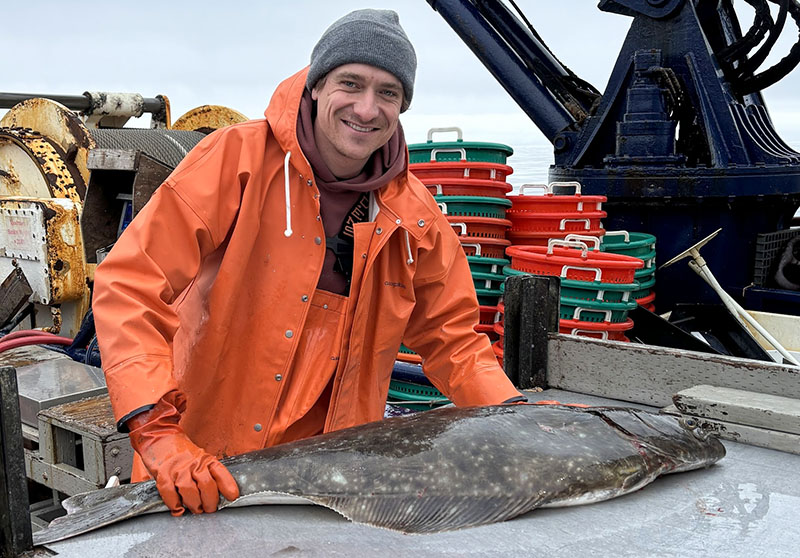
The study leveraged long-term data collected by the Chesapeake Bay Multispecies Monitoring and Assessment Program (left; photo credit: Matthew Farnham). Lead author Sean Hardison (right) led a large, interdisciplinary group of researchers to integrate and analyze the data.
Castorani Lab welcomes three new graduate students
09/17/2025
The Castorani Lab is excited to welcome three new Ph.D. students this fall.
Caitlin Zimmer joins us from the University of New Mexico, where she earned an M.S. in Biology in the lab of Dr. Seth Newsome. Her thesis investigated environmental drivers of cross-ecosystem connectivity in the Hudson River Estuary using compound-specific stable isotope analysis of striped bass scales. Caitlin also brings diverse field and teaching experience, having worked as a fisheries technician in Illinois and Mississippi and as a marine ecology teacher at The Island School in The Bahamas. Before graduate school, she earned a B.S. in Environmental Biology from Tulane University. She is eager to continue her growth as both a researcher and educator at the Virginia Coast Reserve LTER.
Eleanor McGrath earned a B.A. in Environmental Science from Colby College in 2024, where she studied the effects of macroalgal loss on gastropod assemblages in the rocky intertidal with Drs. Alison Barner and Dana Morton. She is broadly interested in how climate change and disturbance shape foundation species and community structure in coastal ecosystems. Eleanor is excited to build on her undergraduate research and contribute to the lab’s work on long-term ecological change in temperate coastal systems.
Shirah Strock recently completed an M.S. in Biology at Sonoma State University, where she examined the effects of multiple stressors on bull kelp growth and survival. She also worked as a scientific diver with Dr. Brent Hughes, contributing to bull kelp restoration projects along the California coast. Before graduate school, Shirah earned dual B.S. degrees in Marine Biology and Environmental Science from Roger Williams University, where she investigated siphonophore swimming kinematics. She looks forward to continuing her research on kelp forest ecology through work with the Santa Barbara Coastal LTER.


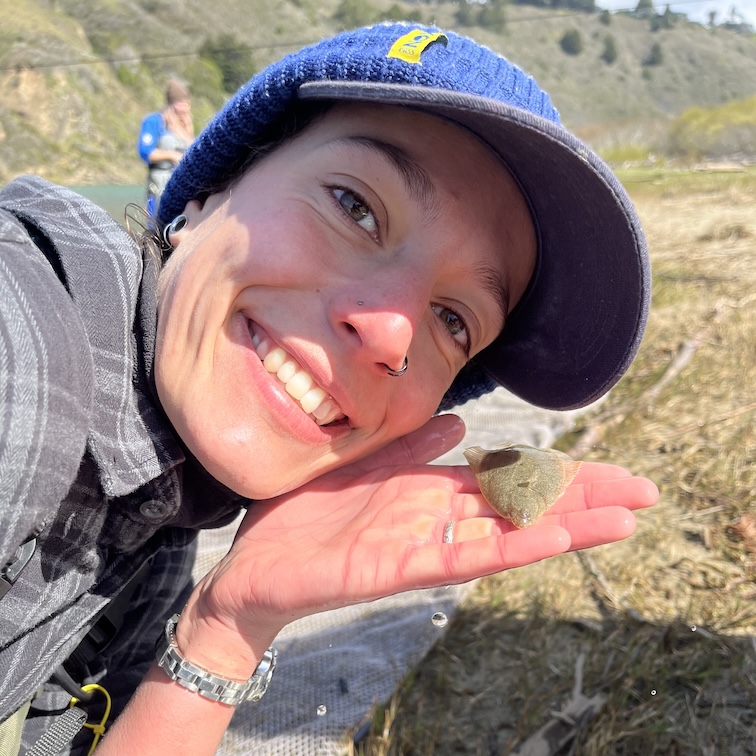
Caitlin Zimmer (left), Eleanor McGrath (center), and Shirah Strock (right) join the lab.
UVA highlights Castorani Lab kelp forest research presented at ESA 2025
09/03/2025
UVA College and Graduate School of Arts & Sciences has published a news article profiling UVA research presented at the 2025 Meeting of the Ecological Society of America in Baltimore, MD, including work from the Castorani Lab. PI Max Castorani gave a talk summarizing NSF-funded research on kelp forest spatial synchrony and the impacts on coastal ecosystem stability.

Max Castorani presenting at the 2025 ESA Meeting.
Michael Cornish completes Ph.D. with Castorani Lab
7/31/2025
This month we celebrated the graduation of Dr. Michael Cornish.
Michael joined the lab in the fall of 2019. In July, he completed his dissertation, “Return of foundation species: effects of large-scale seagrass restoration on hard clam population dynamics and secondary production across spatiotemporal scales”. In addition to his dissertation research, he co-authored three collaborative papers, received a Virginia Sea Grant Graduate Research Fellowship, and presented his work at five scientific conferences.
Michael is now a postdoctoral scholar at the University of California, Santa Barbara, where he is based at the Marine Science Institute and Santa Barbara Coastal LTER, working with Dr. Kyle Emery.
Congratulations Michael!

Dr. Michael Cornish
UVA Today profiles VCR LTER research
07/15/2025
UVA Today has published a news article profiling the UVA Coastal Research Center and our NSF-funded Virginia Coast Reserve Long Term Ecological Research project, with focus on the seagrass and fish restoration ecology by our group. PI Max Castorani and graduate student Chris Oxley are featured in the story.
Video credit: Saint Hereford, University Communications.
Virginia Coast Reserve LTER receives renewed NSF support
6/5/2025
The Virginia Coast Reserve Long Term Ecological Research project was recently renewed for funding by the National Science Foundation (NSF). The project has been funded by NSF since 1987 to develop a predictive understanding of ecosystem state change in coastal barrier systems in response to long-term drivers. The latest iteration, VCR VIII, will investigate (1) mechanisms and consequences of state change within ecosystems; (2) connectivity and coupled dynamics between ecosystems; and (3) landscape-scale dynamics of ecosystem function, synchrony, and stability. The work integrates research across scientific disciplines in several coastal ecosystems including maritime forests, salt marshes, intertidal mudflats, oyster reefs, seagrass meadows, coastal lagoons, and barrier islands. The project also includes large education and outreach programs with the public and local stakeholders that enhance student training, workforce development, and translation of science to environmental solutions. The new six-year, $7.7M grant is led by three UVA faculty—Karen McGlathery, Max Castorani, and Matt Reidenbach—and includes 11 other PIs and dozens of investigators, postdocs, students, and staff from several institutions.
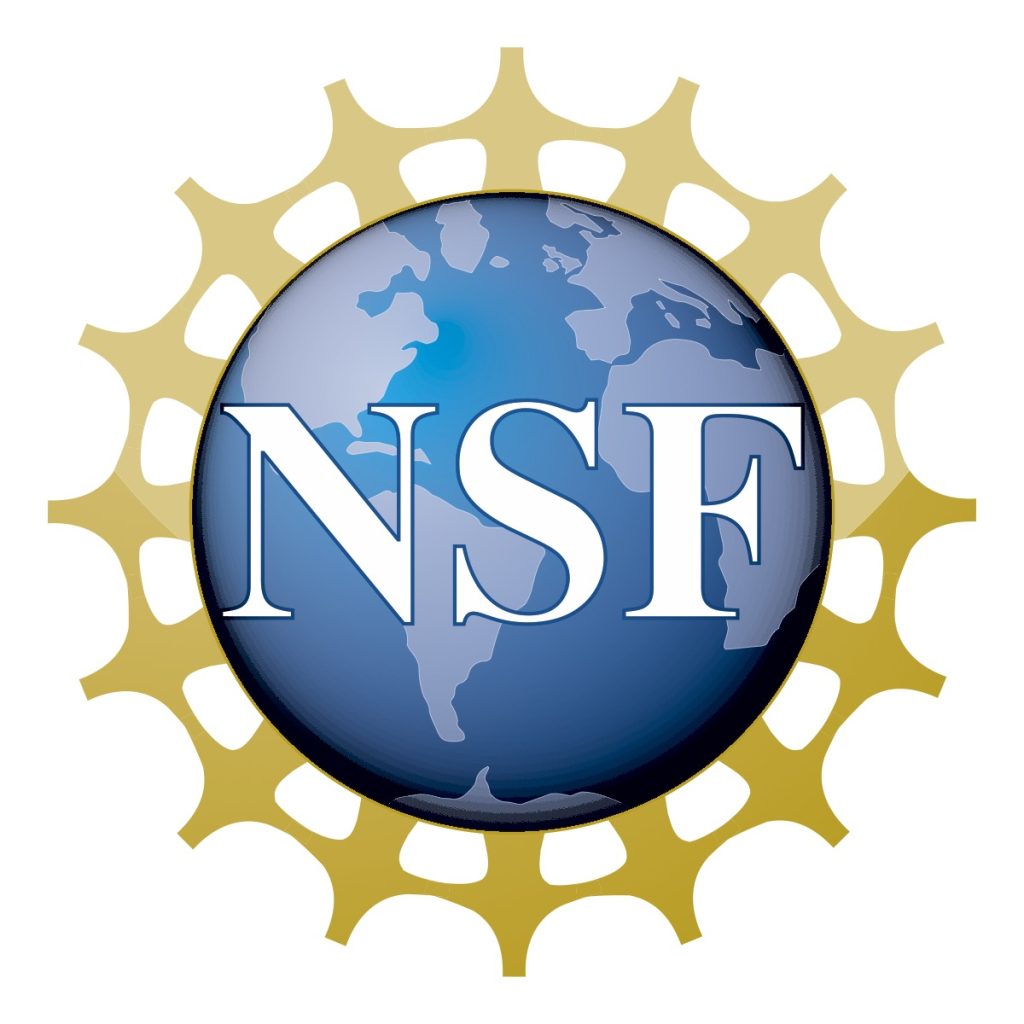
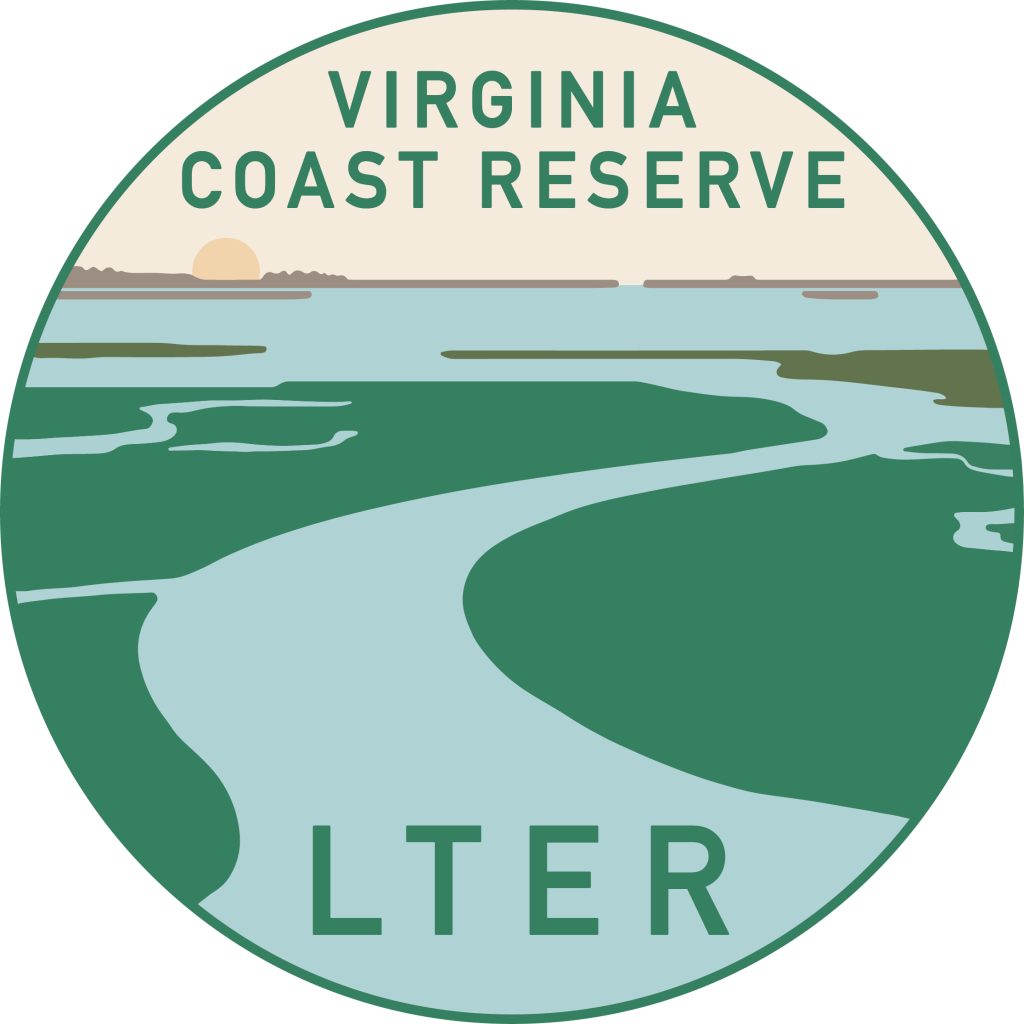
New synthesis paper on synchrony published in Ecology Letters
4/24/2025
A new paper, co-authored by Max Castorani, former postdoc Amanda Lohmann, and current Ph.D. student Ethan Kadiyala, has been published in the journal Ecology Letters. The study focuses on a phenomenon called spatial synchrony — the tendency of the growth and decline of populations of plants and animals to be correlated, even when those populations span vast distances. The research highlights how long-term studies substantially improve scientific understanding of synchrony and its implications for applied sectors, such as agriculture and natural-resource management. The paper uses several long-term datasets, including those from the Santa Barbara Coastal LTER.
The new findings have been summarized by the University of Kansas and UVA. The paper can be downloaded here.
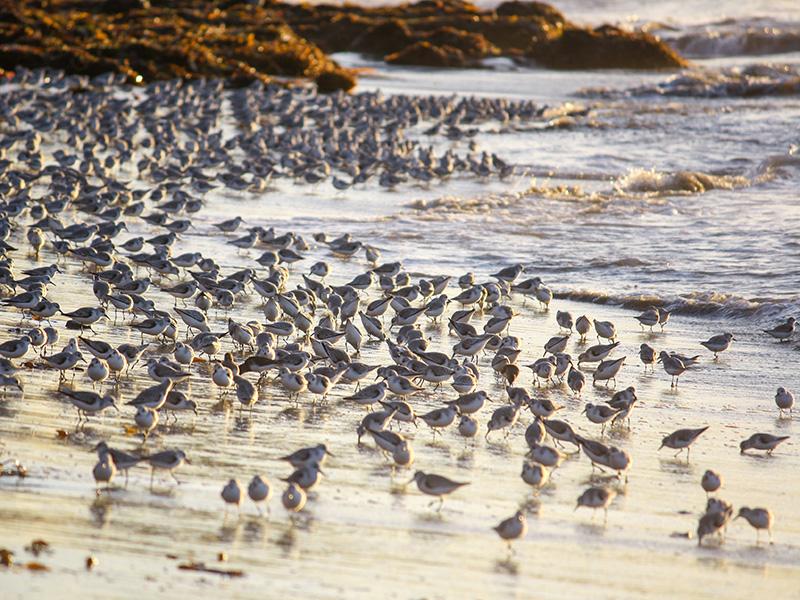
Photo credit: Dave Hubbard.
Castorani Lab welcomes new lab manager
2/14/2025
Last month the Castorani Lab welcomed new lab manager and lead research technician, Wil Atencio. Wil recently earned his M.S. from Georgia Southern University, where he studied how water quality affects oyster disease and demography with Dr. John Carroll. Previously, Wil completed his B.S. in Zoology at the University of Wyoming, where he studied lake plankton ecology. His breadth of experience in field ecology and coastal science will serve him well as he helps lead new and ongoing research initiatives at the Virginia Coast Reserve LTER. Welcome Wil!

Wil Atencio
Castorani Lab welcomes new Ph.D. student and bids farewell to postdoc
10/8/2024
This semester, the Castorani Lab welcomed new Ph.D. student Chris Oxley. Chris graduated with a B.S. in Marine Biology from Texas A&M at Galveston in 2022. As an undergraduate, he studied how the materials used to build marine structures affect hard-substrate invertebrate assemblages. After graduating, he worked as a research technician at Texas A&M at Galveston and assisted with a project surveying Galveston Bay oysters for multiple diseases. In 2023, he started working as a research technician at Rice University, studying how climate affects trees, grasses, and fungi. Chris is interested in using genetic tools and field studies to examine the population and community ecology of marine invertebrates. Welcome Chris!
We also said goodbye to postdoc Amanda Lohmann. Amanda completed a one-year postdoc in the Castorani Lab, studying the synchrony of understory algae in California kelp forest ecosystems. She is now a Data Scientist with Global Fishing Watch. Congratulations Amanda!
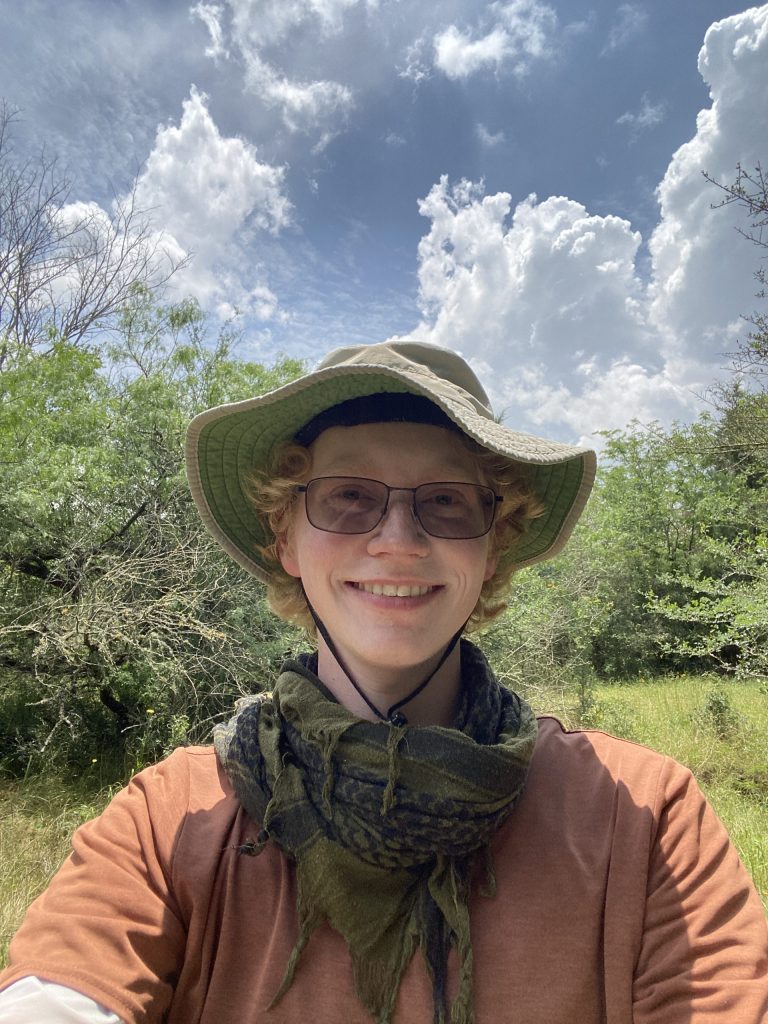
Chris Oxley
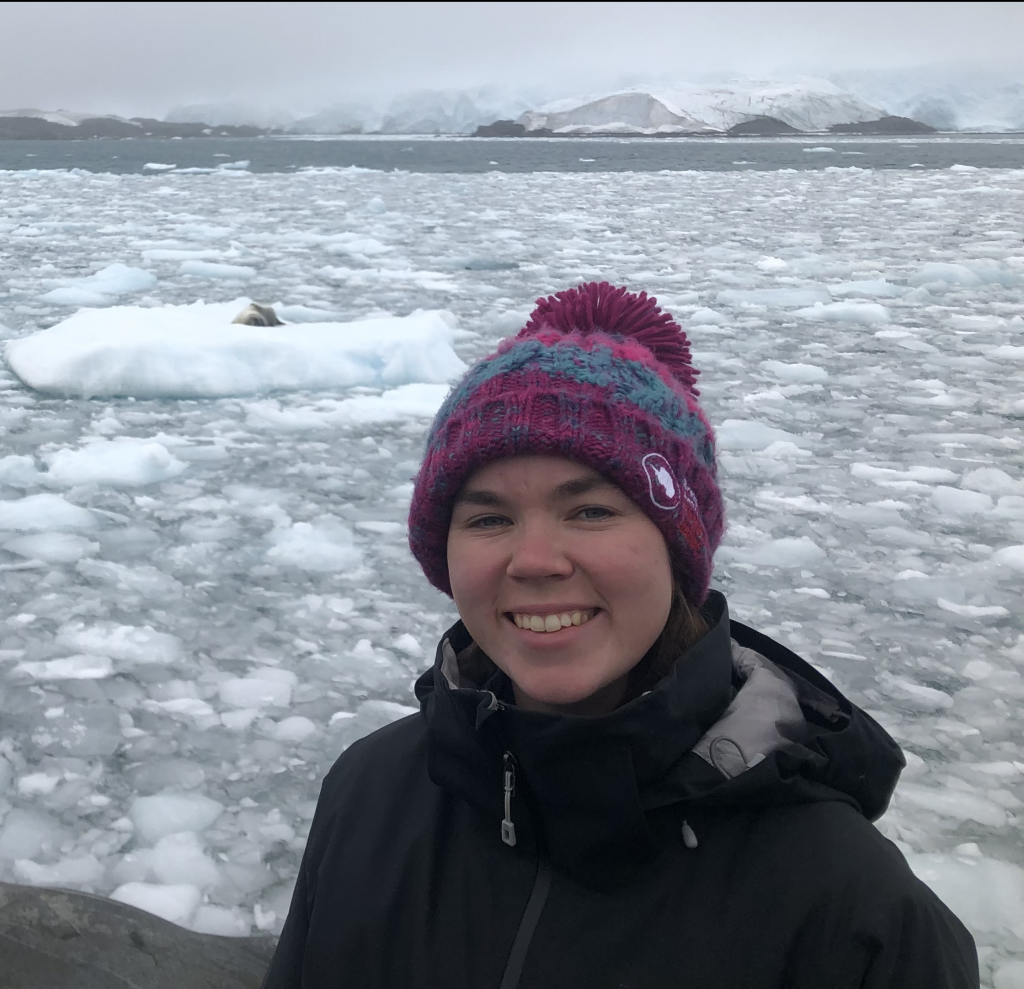
Dr. Amanda Lohmann
Max Castorani receives NSF CAREER award
7/10/2024

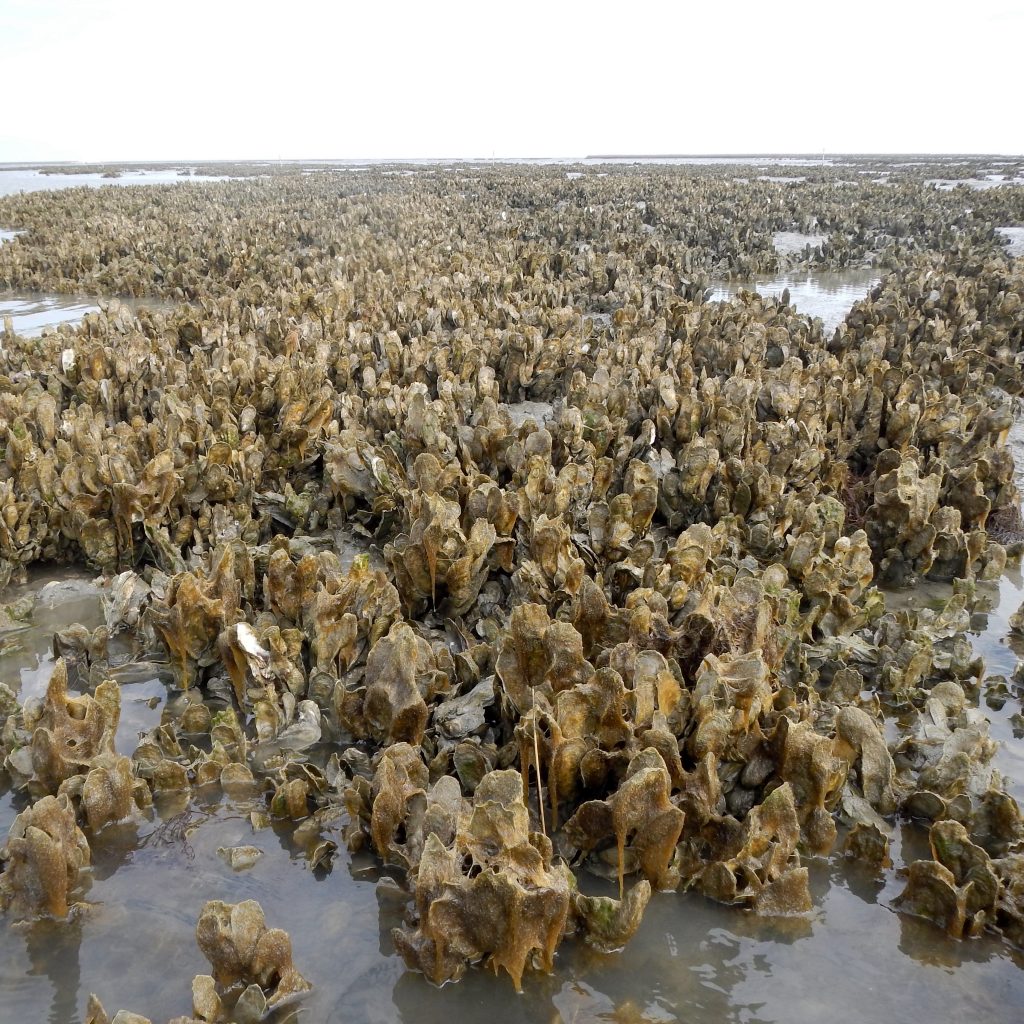
Professor Max Castorani has received a National Science Foundation CAREER award for his project, “Source-sink dynamics in a restored oyster metapopulation“. The NSF Faculty Early Career Development (CAREER) Program supports integrated research and education activities by early-career faculty. The new project will investigate how variability in the ocean environment over time affects the dispersal of oyster larvae; the survival, reproduction, and growth of juvenile and adult oysters; and the implications for successfully restoring oyster reefs. The grant will also support data-driven science education activities for 5th- and 7th-graders, community college students, and undergraduates at UVA.
More information can be found here.
Media coverage:
Castorani Lab graduates first two Ph.D. students
6/18/2024
Two students in the Castorani Lab were recently conferred their Ph.D. degrees.
Dr. Kinsey Tedford completed her dissertation entitled, “Restoring and sustaining oyster reefs: drivers of spatial dynamics in oyster populations”. Kinsey is now a Fisheries Program Manager with the Oyster Recovery Partnership, overseeing its Sustainable Fisheries Program.
Dr. Sean Hardison completed his dissertation entitled, “Relationships between inshore fish communities, small-scale commercial fisheries, and a changing environment across spatial scales in the Mid-Atlantic Bight”. Sean is now a postdoctoral fellow at the University of Alaska Fairbanks and NOAA Alaska Fisheries Science Center.
Congratulations Kinsey and Sean!

Dr. Kinsey Tedford

Dr. Sean Hardison
New paper on marine heatwaves published in Ecology
4/10/2024
A new paper, led by former postdoc Maowei Liang, has been published in the journal Ecology. One of the major tenets of community ecology is that biodiversity can stabilize ecosystems and their functioning. We studied how extreme ocean warming affects such diversity-stability relationships using 20 years of data on algae, invertebrates, and fish from the Santa Barbara Coastal LTER. We found that diversity did affect stability, and this relationship was altered by warming. However, temperature-associated changes in diversity-stability relationships differed among functional groups, spatial scales, and scales of biological organization.
The paper can be downloaded here.
Photo credit: Douglas Klug.
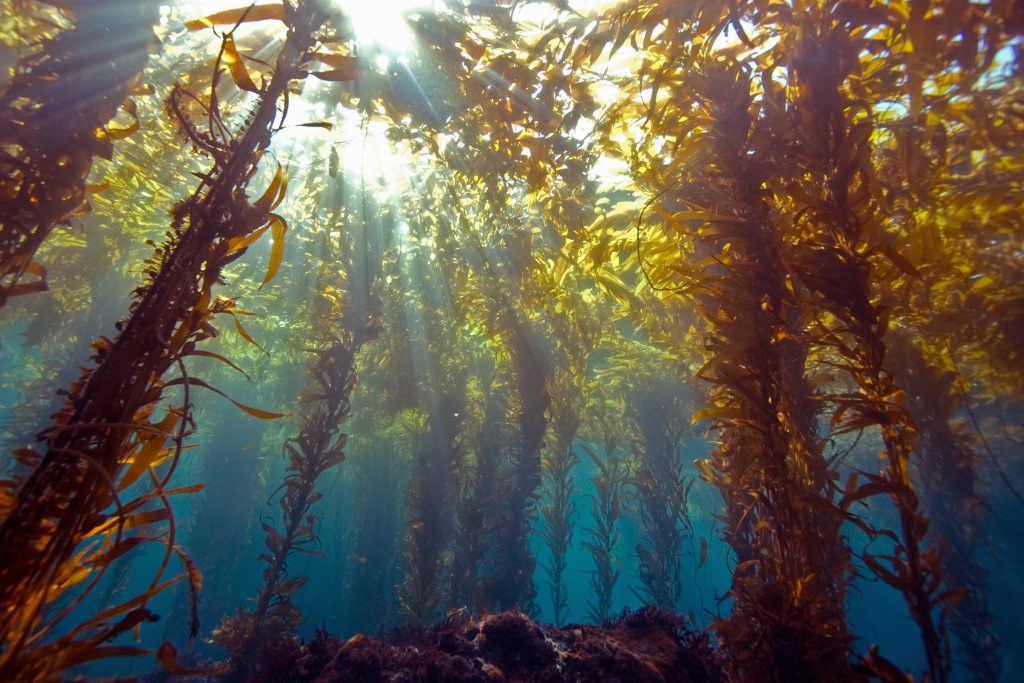
Photo credit: Douglas Klug.

Dr. Maowei Liang
New paper on kelp synchrony published in Ecology
3/7/2024
A new paper, led by recent undergrad Miriam Wanner, has been published in the journal Ecology. Theory predicts that dispersal (of offspring, seeds, spores, etc.) can synchronize the dynamics of populations across space, but this idea has seldom been tested in natural populations. By coupling an 11-year time series of giant kelp dynamics in southern California with a high-resolution ocean circulation model that simulates spore movement, we discovered that kelp spore dispersal was an important driver of kelp synchrony. This study is noteworthy as one of the few to statistically associate synchrony with dispersal in a natural population, and the first to do so in a marine organism.
The paper can be downloaded here.

Photo credit: Ron McPeak.

Miriam Wanner
New paper on cascades of spatial synchrony published in PNAS
1/3/2024
A new paper, led by Jonathan Walter, has been published in the journal Proceedings of the National Academy of Sciences. Using kelp forests and nearby sandy beaches as a model coupled system, we investigated how one ecosystem affects the synchrony of another ecosystem through resource subsidies (i.e., the movement of organic material across ecosystem boundaries). We discovered that synchronous kelp supply, mediated by wave action and beach width, results in synchronous deposition of kelp wrack (detritus) on sandy beaches, which then cascades across trophic levels to synchronize abundances of shorebirds that move among beaches to forage on wrack-associated invertebrates. Such cross-ecosystem synchronization via subsidies likely plays a major but previously unrecognized role in the dynamics and stability of coupled ecosystems.
The new findings have been summarized by UC Davis/UC Santa Barbara. The paper can be downloaded here.

Dr. Jon Walter
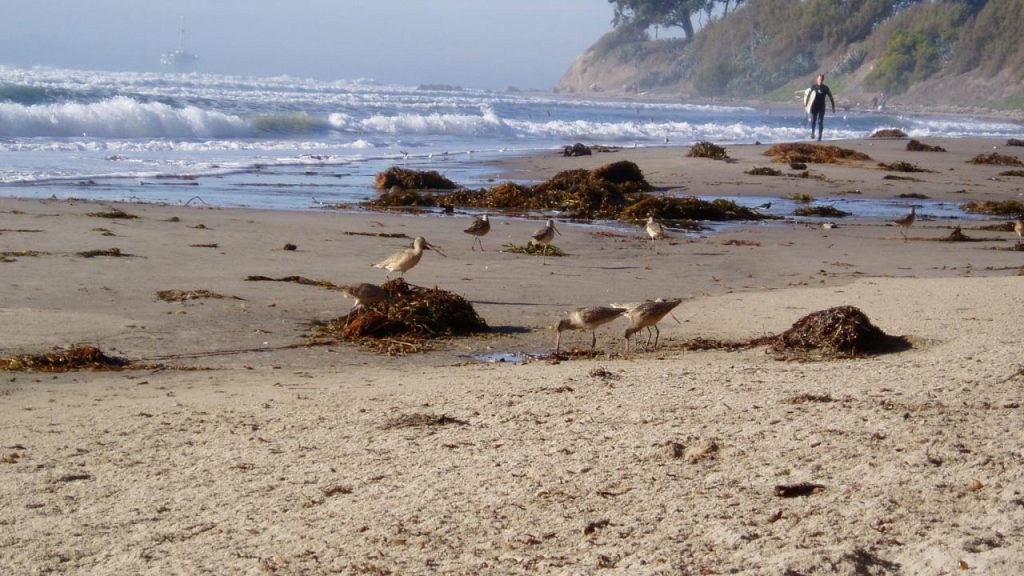
Photo credit: Jenny Dugan.
Castorani Lab welcomes Dr. Amanda Lohmann
9/28/2023
The Castorani Lab welcomes Dr. Amanda Lohmann as a new postdoctoral scholar at UVA. Amanda will be studying the role of kelp spatial synchrony in structuring kelp forest communities along the California coast. Prior to joining UVA, Amanda completed her Ph.D. at the Duke University Marine Laboratory with Dr. Doug Nowacek, where she studied the impact of climate change on the krill-centric marine ecosystem along the western Antarctic Peninsula. She is particularly interested in understanding how climate variability at different temporal/spatial scales drives the structure and function of marine ecosystems.
Welcome Amanda!

Dr. Amanda Lohmann
New paper on oyster restoration published in Ecological Applications
5/19/2023
A new paper, led by Rachel Smith, has been published in the journal Ecological Applications. We assessed the drivers of oyster restoration success using a meta-analysis of reef restoration projects throughout the U.S. Gulf and Atlantic coasts. We discovered that physical conditions control restoration success, as recovery of oyster production was greater in areas that were deeper (subtidal), saltier (mesohaline), and had greater tidal ranges. Additionally, restoration increased the abundance and diversity of free-swimming fish and shellfish over time as reefs aged (at least 8 years after their construction).
The new findings have been summarized by Mongabay. The paper can be downloaded here.
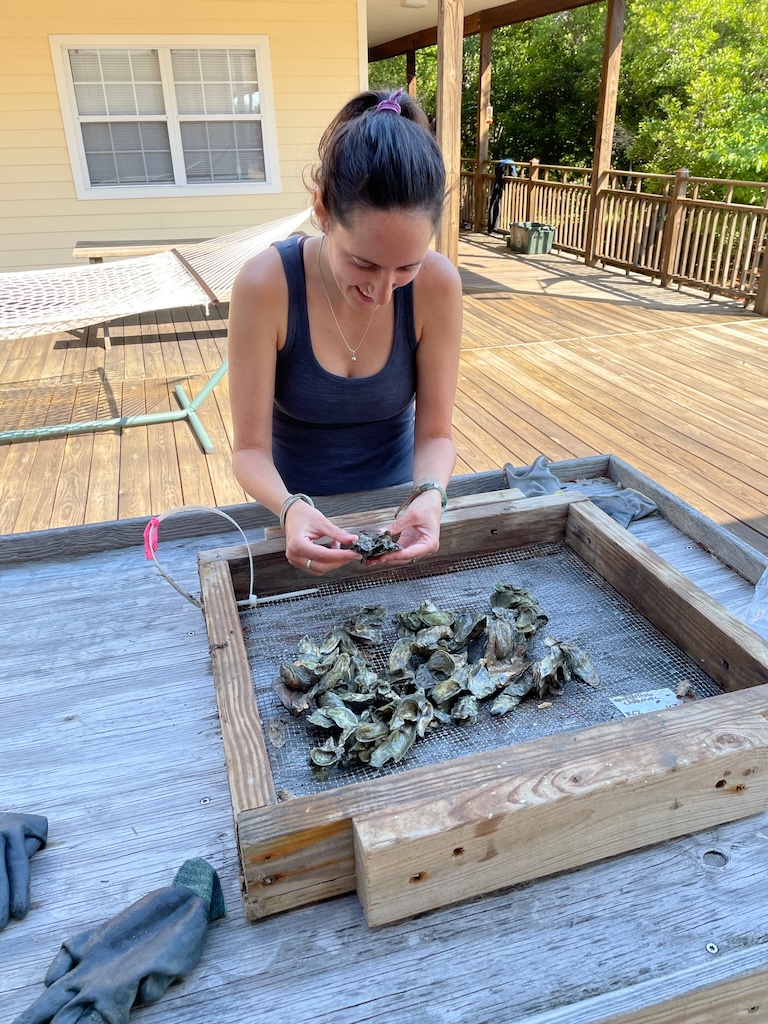
Dr. Rachel Smith
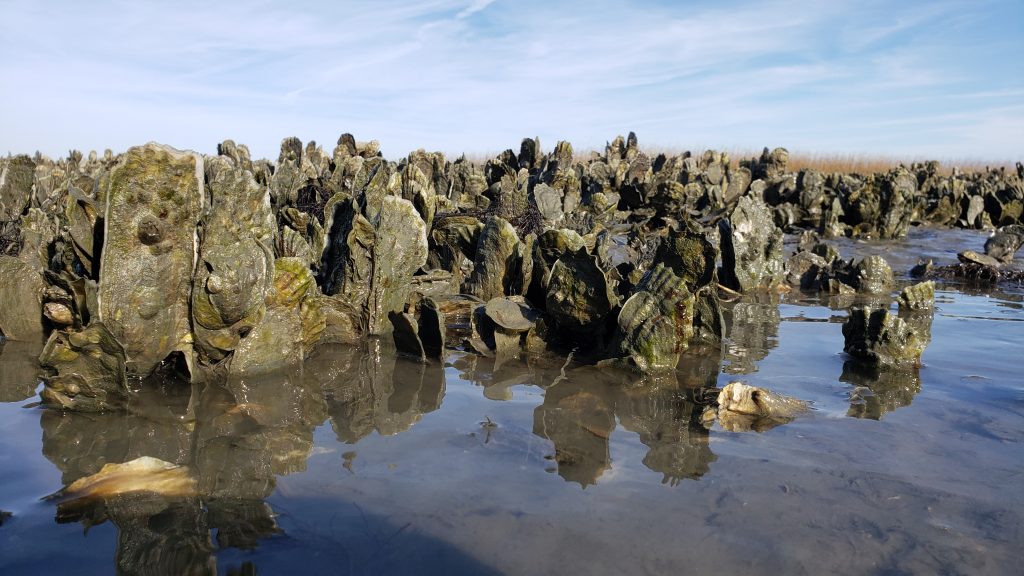
Photo credit: Bo Lusk, The Nature Conservancy.